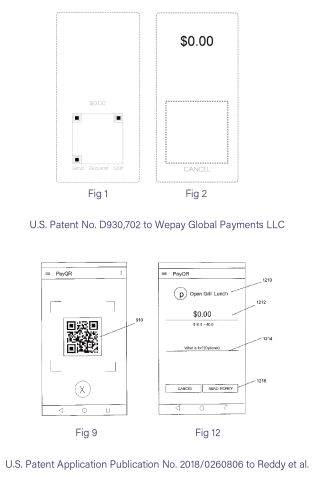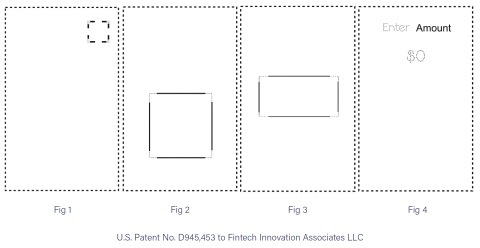In 2022, the Patent Trial and Appeal Board (PTAB) did not issue any final written decisions involving design patents. However, it did issue three decisions granting review of challenged design patents and three decisions denying review of challenged design patents, maintaining 2021’s design patent institution rate of 50%.
As a whole, the institution rate for petitions filed against design patents remains at 38%. This is based on a total of 72 institution decisions (28 granted, 44 denied). The design patent institution rate reflects the apparent difficulty in presenting a sufficient case that the challenged design patent is unpatentable based on prior art. This difficulty might remain unchanged, if not increase, with respect to challenges based on anticipation given the Federal Circuit decision In re Surgisil, which limits what prior art is available to deem a design unpatentable as anticipated.
In this regard, two of the three instituted cases in 2022 are notable because they appear to be the first AIA proceedings including a discussion of applicable anticipatory prior art under In re Surgisil. The two cases, Early Warning Services, LLC v. Wepay Global Payments LLC and Samsung Electronics Co., Ltd. v. Wepay Global Payments LLC, also appear to be the first AIA proceedings involving a design patent for an animated graphical user interface (GUI).
Early Warning Services (“EWS”) and Samsung Electronics (“Samsung”) each requested review of Paten-tee Wepay Global Payment’s (“Wepay”) U.S. Patent No. D930,702 based on the same grounds and prior art references, including a ground of anticipation based on Figures 9 and 12 in U.S. Patent Application Publication No. 2018/0260806 to Reddy et al. (“Reddy”). Wepay submitted a Preliminary Response to EWS’s Petition, but not to Samsung’s, and argued that In re Surgisil compels the PTAB to deny instituting post grant review of the ’702 Patent because Reddy, in particular Figure 9, is not applicable prior art. According to Wepay, Figure 9 shows a mobile phone taking a picture of a QR code. Therefore, the QR code in Figure 9 is an icon array “applied to another unspecified article of manufacture, not the article of manufacture claimed in the ’702 Patent.” PGR2022-00031, Paper 9 (Jul. 7, 2022).
The PTAB rejected Wepay’s argument. Figure 9 of Reddy, according to the PTAB, explicitly discloses a display screen, which is the same as the display screen of the claimed design. The PTAB also noted that Wepay itself admits in its Preliminary Response that Reddy’s design arguably would meet the icon array disclosed in the ’702 patent. PGR2022-00031, Paper 22 (Oct. 7, 2022). Compare the two designs below.
The PTAB therefore determined that the evidentiary record sufficiently shows that Reddy more likely than not anticipates the challenged claim, and the PTAB granted EWS’s request to institute post grant review of the ’702 Patent on that ground among other grounds of anticipation and obviousness. Id. For the same reasons, the PTAB granted Samsung’s request for institution of post grant review of the ’702 Patent, and to join as a petitioner in PGR2022-00031. PGR2022-00045, Paper 9 (Dec. 20, 2022).
The ’702 Patent is not the only design patent for an animated graphical user interface that is the subject of a pending AIA challenge. Shortly after filing its Petition for review of the ’702 Patent, EWS filed a Petition requesting review of Patentee Fintech Innovation Associates LLC’s (“Fintech”) U.S. Patent No. D945,453. Fintech did not file a Preliminary Response, but instead filed a Statutory Disclaimer attempting to donate the ’453 Patent to the public domain on October 10, 2022. EWS, in response, filed a motion for adverse judgment. In part because of Fintech’s apparently deficient Statutory Disclaimer, which lacked the appropriate fee, the PTAB denied EWS’s motion, but noted that it could be renewed in early December. Early Warning Services, LLC v. Fintech Innovation Associates LLC, PGR2022-00046, Paper 13 (Nov. 15, 2022). As of December 31, 2022, Fintech does not appear to have paid the Statutory Disclaimer fee, and EWS has not renewed its motion for adverse judgment.
Whether the ’702 and the ’453 Patents will survive their respective challenges remains to be seen, but the statistics suggest an unfavorable outcome. Excluding the instituted cases in 2022, petitioners that succeed in getting inter partes review instituted are successful in invalidating the challenged design patent in 68% of the cases.1 The outcome of PGR2022-00031 and PGR2022-00046 are ones to watch in 2023, and could encourage more IPR/PGR challenges to design patents for GUI.
1. Of the 25 cases instituted through 2021, 16 found the challenged patent to be unpatentable based prior art.
This article appeared in the 2022 Design Patents Year in Review: Analysis and Trends report.
Related Industries

Receive insights from the most respected practitioners of IP law, straight to your inbox.
Subscribe for Updates

